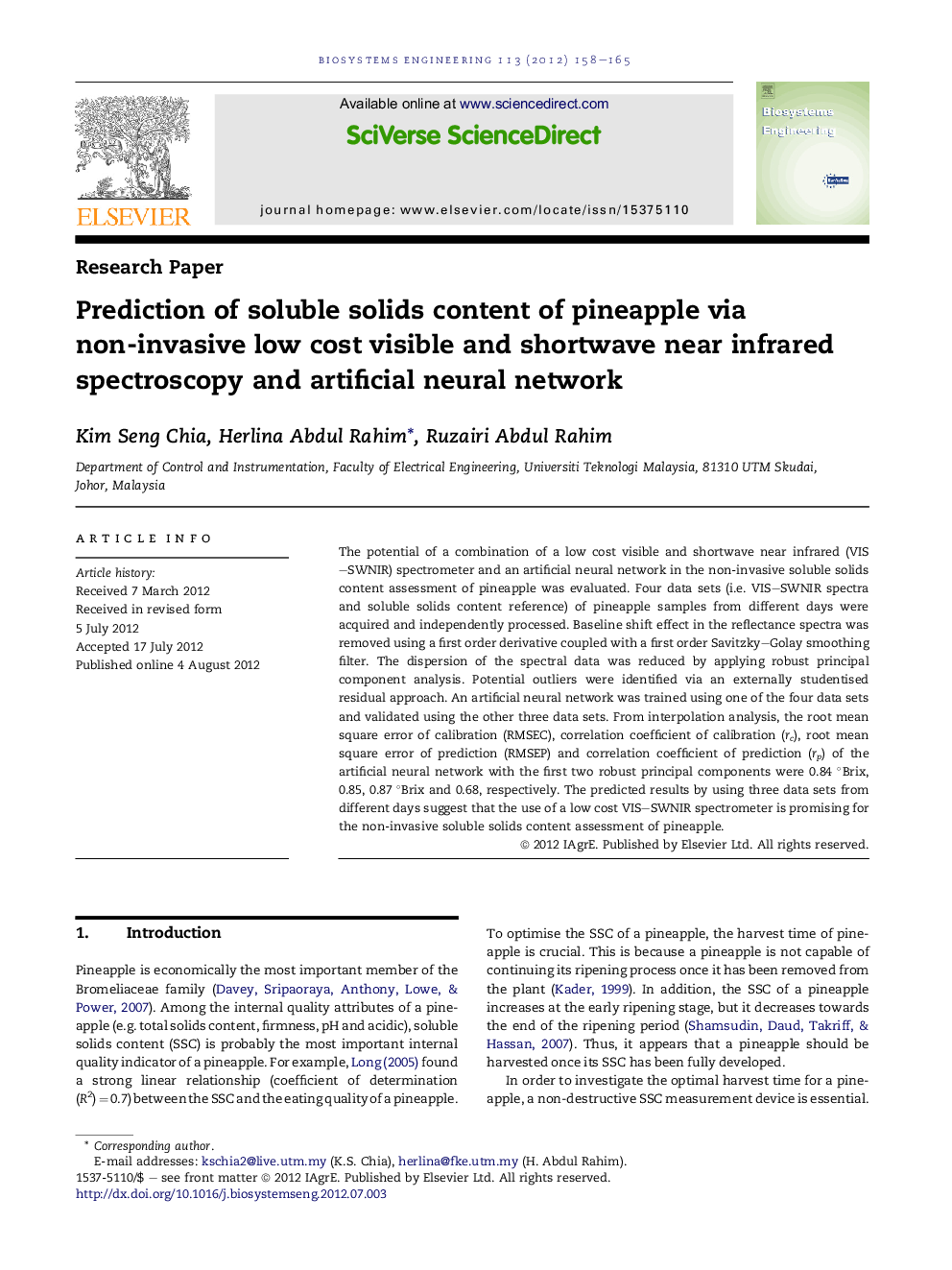| Article ID | Journal | Published Year | Pages | File Type |
|---|---|---|---|---|
| 1711457 | Biosystems Engineering | 2012 | 8 Pages |
The potential of a combination of a low cost visible and shortwave near infrared (VIS–SWNIR) spectrometer and an artificial neural network in the non-invasive soluble solids content assessment of pineapple was evaluated. Four data sets (i.e. VIS–SWNIR spectra and soluble solids content reference) of pineapple samples from different days were acquired and independently processed. Baseline shift effect in the reflectance spectra was removed using a first order derivative coupled with a first order Savitzky–Golay smoothing filter. The dispersion of the spectral data was reduced by applying robust principal component analysis. Potential outliers were identified via an externally studentised residual approach. An artificial neural network was trained using one of the four data sets and validated using the other three data sets. From interpolation analysis, the root mean square error of calibration (RMSEC), correlation coefficient of calibration (rc), root mean square error of prediction (RMSEP) and correlation coefficient of prediction (rp) of the artificial neural network with the first two robust principal components were 0.84 °Brix, 0.85, 0.87 °Brix and 0.68, respectively. The predicted results by using three data sets from different days suggest that the use of a low cost VIS–SWNIR spectrometer is promising for the non-invasive soluble solids content assessment of pineapple.
► Soluble solids content prediction of pineapple via a low cost VIS–SWNIR spectroscopy. ► A combination of Bayesian artificial neural network and robust principal component analysis. ► Evaluation of the predictive performance by independently using four data sets from different days.
